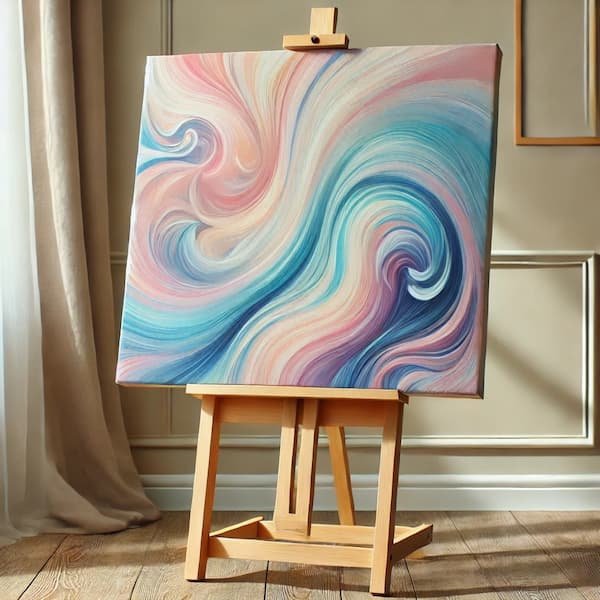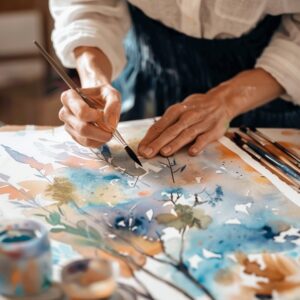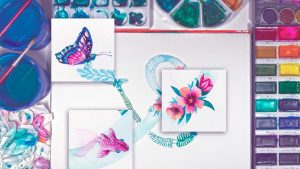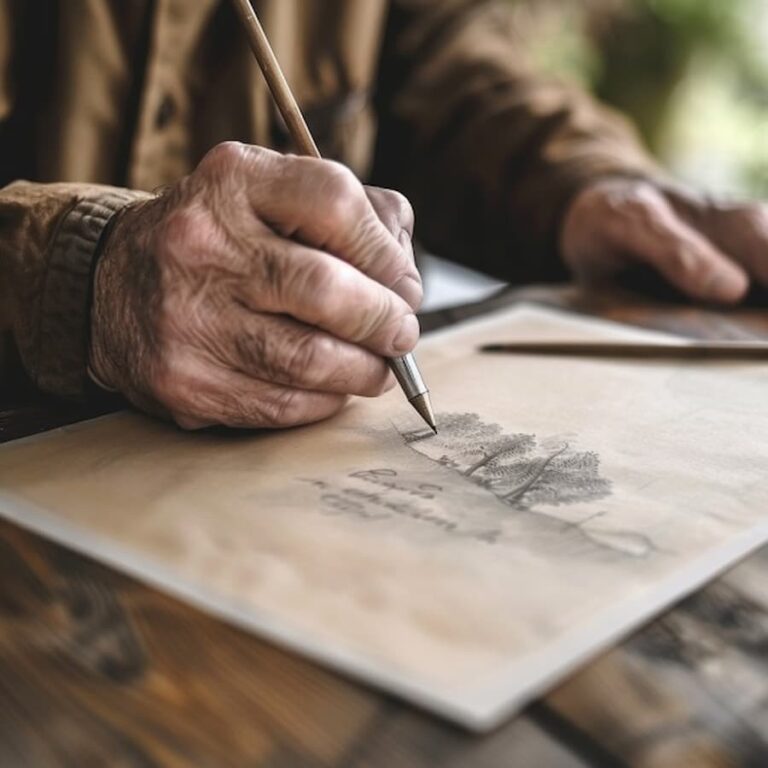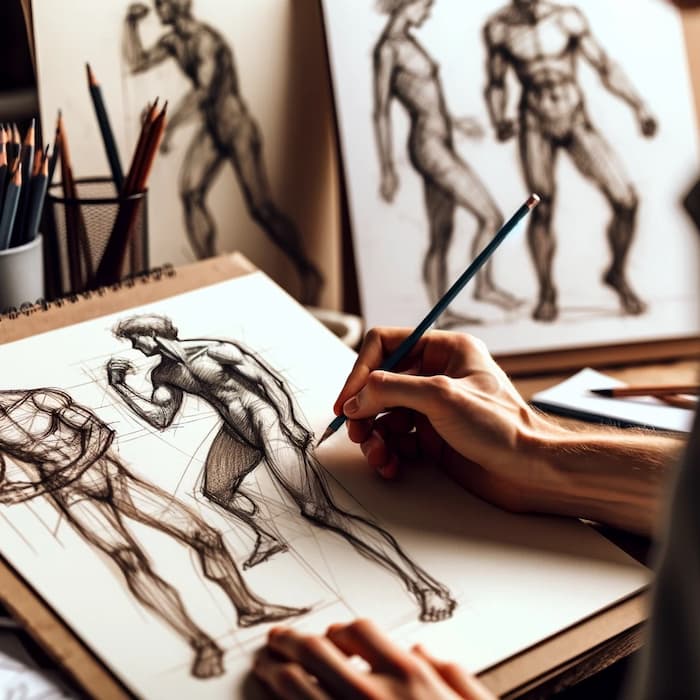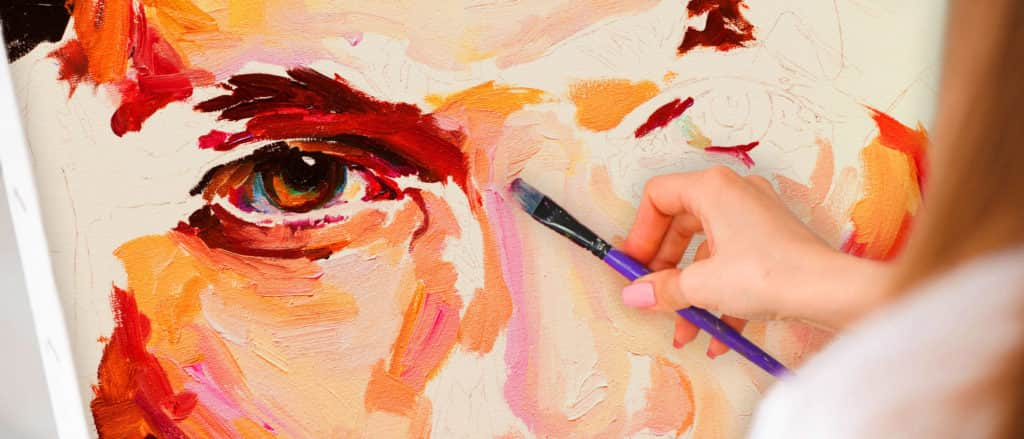Painting Pastels on Canvas: A Complete Guide to Professional Results
Painting pastel on canvas is a technique that has captured the attention of artists of all levels for its versatility, richness of color and the ability to create unique textures. Traditionally, pastel is used on paper, but pastel on canvas offers a fascinating alternative that allows you to explore a more resilient and adaptable surface. In this article, we will discuss in depth how to paint with pastels on canvas, the materials needed and useful techniques to achieve amazing results.
What is painting pastel on canvas?
Pastels on canvas is a technique that, as the name suggests, involves applying pastels to paint pictures directly onto prepared canvas. While pastels are usually applied on specialized papers due to their delicate texture, canvas offers a more durable surface suitable for large-scale works.
Pastel is a dry medium that allows for rapid color blending, resulting in a smooth feel and matte finish. When combined with canvas, artists can experiment with more flexibility and fewer limitations on the size or preparation of the support.
Why choose pastel on canvas instead of paper?
Traditionally, pastel is associated with paper because of the fine texture and the ability of paper to “grab” pigment. However, pastel on canvas has certain key advantages:
- Durability: Canvas is stronger and more durable than paper, making it ideal for long-term work.
- Flexibility: By using canvas, you can work on larger sizes without worrying about the fragility of the support.
- Texture: The texture of the canvas adds a new dimension to the work, allowing the artist to play with layers and depth of color in a different way.
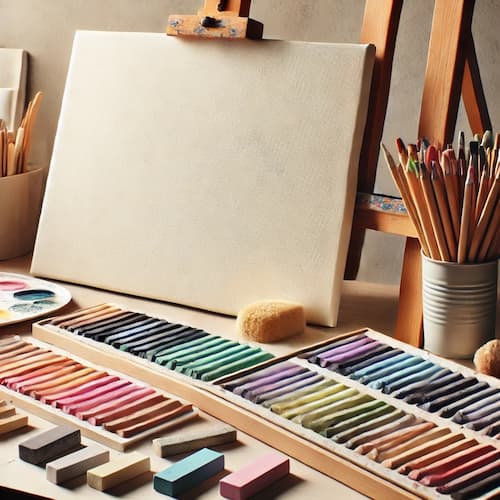
Materials needed to paint pastel on canvas
Before you start painting pastels on canvas, it is crucial to make sure you have the right materials. Here are the basic supplies:
Types of pastels for painting pictures
There are different types of pastels for painting pictures that you can use on canvas:
- Soft pastels: These are the most common, ideal for mixing and blending colors. However, they tend to be more fragile.
- Hard pastels: They offer more control and precision in details, which makes them useful for initial layers.
- Oil pastels: Although not technically dry pastels, they can be used on canvas for a denser pastel effect with greater adherence to the support.
Canvas preparation
To ensure that the pastels adhere properly to the canvas, it is necessary to prepare it properly. Here are the basic steps to prepare a canvas:
- Sanding: Remove any imperfections on the surface of the canvas by sanding it smooth.
- Primer: Apply a coat of gesso or specialized pastel primer. This creates a rougher surface that makes it easier for the pastel to adhere.
- Drying: Let the primer dry completely before starting to work.
Pastel application techniques for painting on canvas
Painting pastels on canvas requires certain techniques that vary from other media, such as oil or acrylic painting. Here are some of the most effective techniques:
Layers and blends
One of the most attractive aspects of pastels for painting pictures is their ability to overlay colors. The layering process in pastel on canvas is essential for building depth and texture.
- Soft Layers: Apply soft pastels in thin layers to build color gradually.
- Blurring: Use your fingers, rags, or spheres to blend the colors on the canvas.
- Overlapping: The key to a good pastel-on-canvas finish is to overlay different tones to create a three-dimensional effect.
Texturing
Canvas offers a natural texture that can be exploited when painting pastel on canvas. The rough bristles of the canvas capture the pastel in certain areas, creating interesting contrasts between smooth and textured areas.
Fixing of pastel on canvas
One of the most important challenges when working with pastel on canvas is making sure that the pigment does not come off over time. Pastel fixatives are an effective solution to keep the pigment in place.
- Aerosol fixatives: These products ensure that the pastel powder adheres to the canvas without altering the color.
- Fixative application: Apply fixative as you build layers and also at the end of the work.
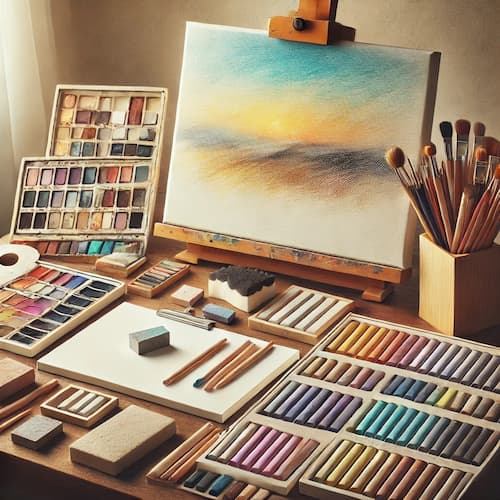
How to preserve a work of pastel on canvas
Once you have finished painting pastels on canvas, it is crucial to preserve the work properly to ensure its longevity. Pastels, being dry and dusty mediums, can be easily damaged if not handled with care.
Protection of the work
- Framing: For finished works, framing with glass or Plexiglas is an excellent option to protect them from dust and humidity.
- Storage: If you prefer not to frame immediately, store the work in a dry place, away from direct sunlight.
Long-term maintenance
Pastel on canvas requires minimal maintenance. Just make sure the work is protected from dust and moisture to prevent colors from fading or pastel dust from coming off.
Additional tips for painting pastels on canvas
For those who are ready to experiment with pastels to paint pictures on canvas, here are some additional tips that can enhance your experience:
- Experiment with combinations: Use hard pastels for fine details and soft pastels for larger areas.
- Play with light: Transparent pastel layers can create interesting effects with light, adding dynamism to your work.
- Avoid excessive fixative: Although fixative is essential, excessive use can change the colors of your work. Use it sparingly.
To learn how to work with pastel like a real professional, knowing all its characteristics, use of materials and how to get the most out of this technique, visit our Painting Course with Lifetime Access + Workshops.

